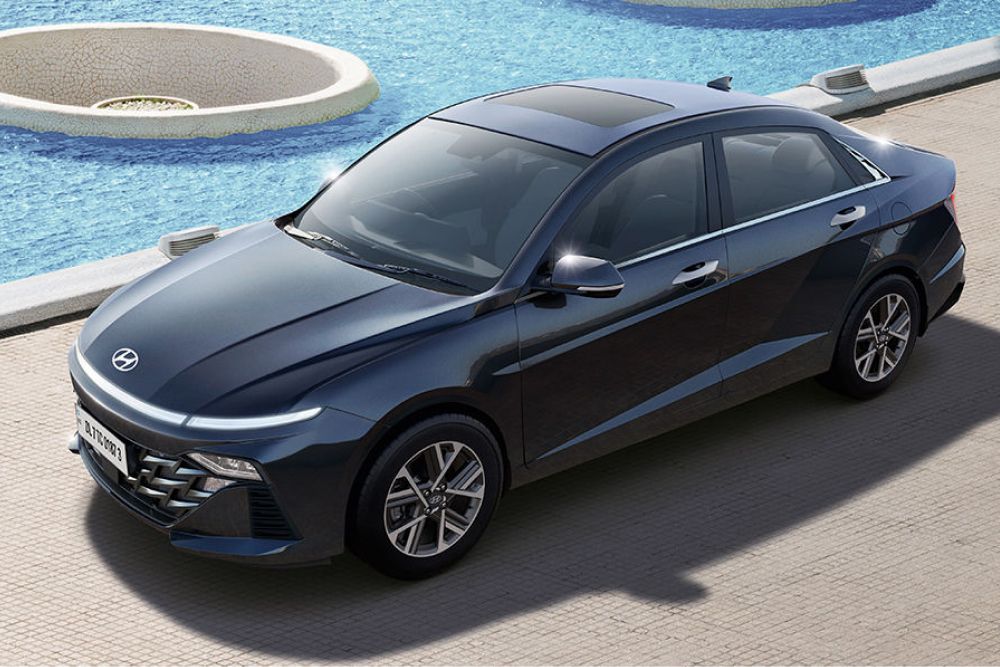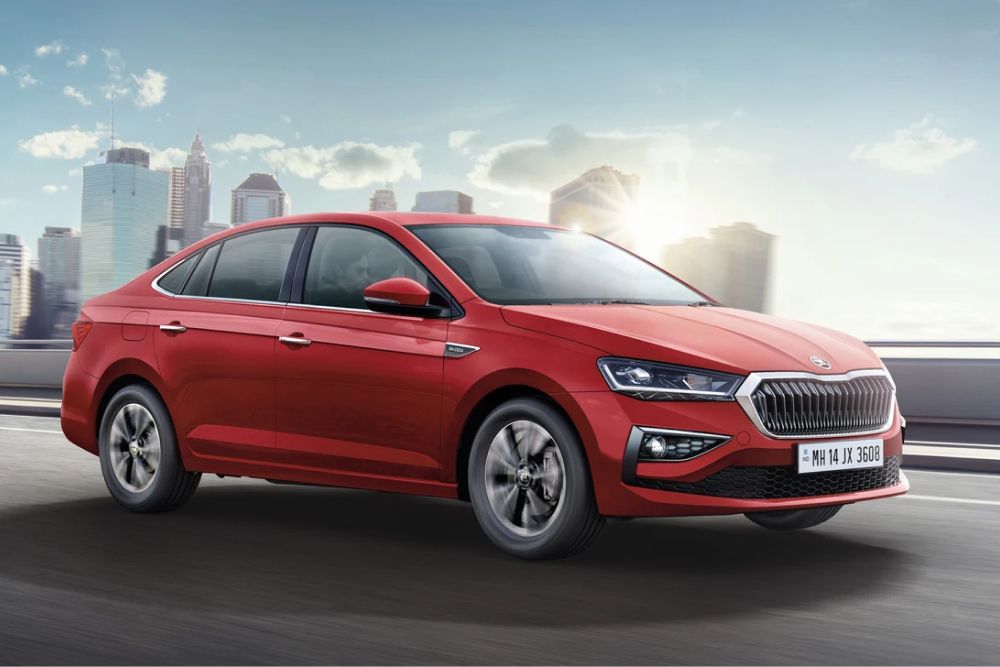Lada Iskra: Maybe the hottest Russian Sedan by a Russian Auto Manufacturer!
Published On 21/12/2024, 5:23:48 pm Author gaurav CyrilIn terms of car design, Russia often feels two decades behind the global trends, but this time, Russian auto giant LADA has made a bold leap forward with its newest creation, the LADA Iskra. Iskra is an interesting 2025 car that you must learn about!

LADA is a prominent Russian automobile brand owned by AVTOVAZ, one of the largest car manufacturers in Eastern Europe. While LADA was originally established as a Soviet state enterprise in 1966, it is no longer directly owned by the government. Instead, AVTOVAZ operates as a private entity, with its majority stake controlled by the Renault-Nissan-Mitsubishi Alliance until 2022.
 For decades, AVTOVAZ thrived in a protected market with little competition, focusing on robust, affordable cars like the LADA 2101 and LADA Niva. However, much like Hindustan Motors in India, it struggled to innovate beyond the basic requirements of its domestic market. The result was a brand that fell behind global trends in design, performance, and technology. The involvement of the Renault-Nissan-Mitsubishi Alliance brought some modernization to LADA, but the recent re-nationalization under NAMI threatens to repeat the same pattern of state-led stagnation.
For decades, AVTOVAZ thrived in a protected market with little competition, focusing on robust, affordable cars like the LADA 2101 and LADA Niva. However, much like Hindustan Motors in India, it struggled to innovate beyond the basic requirements of its domestic market. The result was a brand that fell behind global trends in design, performance, and technology. The involvement of the Renault-Nissan-Mitsubishi Alliance brought some modernization to LADA, but the recent re-nationalization under NAMI threatens to repeat the same pattern of state-led stagnation.
Although LADA has put significant effort into designing the Iskra, and it feels like an upgraded version of the LADA Vesta.
The Iskra is positioned in the B-segment sedan category, similar to cars like the Maruti Suzuki Ciaz, Honda City, Hyundai Verna, and the Skoda Slavia.
Cars in India similar to Lada Iskra
The pricing of the LADA Iskra, expected to start at 1,150,000 rubles, converts to approximately ₹11.5 lakh (as per current exchange rates). This places it in the same price bracket as the mid-level trims of the Indian sedans mentioned above.
Indian Cars in the Same Price Range
 Hyundai Verna (₹10.96–17.38 lakh): Known for its sleek design, feature-packed interiors, and a choice of turbocharged engines, it is a strong contender in this segment.
Hyundai Verna (₹10.96–17.38 lakh): Known for its sleek design, feature-packed interiors, and a choice of turbocharged engines, it is a strong contender in this segment.
Honda City (₹11.63–16.11 lakh): A favorite among Indian buyers for decades, offering premium interiors and a smooth drive.
Maruti Suzuki Ciaz (₹9.30–12.45 lakh): Offers a spacious cabin, reliable performance, and cost-effective maintenance, making it a go-to sedan for families.
Skoda Slavia (₹11.29–18.43 lakh): Features European styling, solid build quality, and a range of turbo-petrol engines.

When comparing the LADA Iskra to Indian B-segment sedans, the differences become quite pronounced, especially when you dive into the specifics of dimensions, engine performance, and features. Indian sedans in this segment, like the Honda City, Hyundai Verna, and Maruti Suzuki Ciaz, have raised the bar with their offerings, leaving the Iskra with a steep hill to climb.
The Honda City, for instance, stretches to 4,583 mm in length and has a wheelbase of 2,600 mm. Similarly, the Hyundai Verna and Maruti Ciaz provide ample legroom and comfort. The LADA Iskra, likely modeled after the Vesta, is expected to be more compact, with a length of about 4,410 mm and a wheelbase of 2,635 mm.
Engine performance is another area where the Iskra falls behind. Its 1.6L engines, offering 90 hp and 106 hp options, seem adequate on paper but lack the refinement and punch that Indian buyers now demand. Cars like the Hyundai Verna push the boundaries with turbo-petrol engines delivering up to 160 hp, while the Honda City offers a smooth 121 hp petrol engine and a reliable diesel alternative. Even the mild-hybrid system in the Ciaz, though less powerful, provides a balance of efficiency and modernity.

 Features are where the gap truly widens. Indian sedans in this range are brimming with technology and luxury elements. From ADAS in the Honda City to ventilated seats and wireless charging in the Hyundai Verna, these cars have set benchmarks in comfort and convenience. In contrast, the Iskra’s feature list remains basic, focusing on durability and function rather than cutting-edge innovation. Its localized electronic infrastructure and aerodynamic design are commendable, but they don't excite the modern consumer.
Features are where the gap truly widens. Indian sedans in this range are brimming with technology and luxury elements. From ADAS in the Honda City to ventilated seats and wireless charging in the Hyundai Verna, these cars have set benchmarks in comfort and convenience. In contrast, the Iskra’s feature list remains basic, focusing on durability and function rather than cutting-edge innovation. Its localized electronic infrastructure and aerodynamic design are commendable, but they don't excite the modern consumer.
Why Russian Cars feel basic compared to Indian
when you compare Iskra to Indian sedans in the same segment, it still feels like it's stuck in a time warp—roughly 10 years behind. Sure, LADA has worked on modernizing the aesthetics, introducing sleeker lines and an "X-design," but when you line it up next to an Indian car like the Hyundai Verna or Honda City, the difference in refinement, features, and attention to detail is stark.
Russian automobiles, including LADA, have traditionally prioritized functionality over flair. They’re built to endure harsh weather conditions and tough terrains, which makes them great for rugged use. But this utilitarian approach means the cars often lack the sophistication and innovation we’ve come to expect in modern vehicles. Meanwhile, Indian automakers are racing ahead, offering sedans that balance style, technology, and value.
Imagine a car like the Maruti Dzire being exported to Russia. Not only would it cost significantly less than the LADA Iskra, which is priced at ₹11.5 lakh, but it would also come loaded with more features, better fuel efficiency, and a smoother ride. And let’s not forget, the Dzire has a proven track record of handling all kinds of roads—from the potholes of rural India to the highways. Russia might just fall in love with its practicality and affordability!
Russian auto industry still feels very niche and military-focused, excelling in building tanks and trucks rather than consumer cars. Maybe that’s where their strength lies—rugged machines for extreme conditions, rather than city slickers for the global middle class.
The design and evolution of a product are always deeply influenced by the culture and governance of the country where it originates. In the case of LADA, its vehicles reflect the more utilitarian, rugged nature of Russian society, shaped by decades of socialist and military-oriented production. The culture of toughness and practicality permeates the design choices, which prioritize durability over luxury or innovation.
On the other hand, India's democracy, though not without its challenges, fosters a more market-driven approach. The Indian auto industry, especially in recent years, has embraced global trends and consumer demands—blending cutting-edge technology, design, and affordability. The influence of democratic processes means that automakers are more in tune with customer desires, pushing innovation and refining their products continuously. You see it in the sleek designs of the Maruti Suzuki Dzire, the feature-packed Hyundai Verna, and the premium offerings from brands like Tata and Mahindra, which have undergone massive transformations over the past decade.
The difference in governance styles also impacts how industries evolve. In Russia, a more centralized control often leads to designs that feel dated or disconnected from global trends. In India, the open market and consumer-driven growth spur greater competition, and automakers are more likely to incorporate modern designs, features, and technology to cater to the diverse Indian population, which is young, tech-savvy, and increasingly discerning.
Lada Iskra verdict
While it doesn’t have the high-performance numbers of its global counterparts, the Iskra’s engine is well-suited for the domestic needs of Russian consumers. The 1.6-liter variants offer a good balance of power and fuel efficiency, making it practical for everyday use, especially for families or city commuters. The engine's relatively modest performance might not turn heads in terms of raw power, but it’s more than adequate for a vehicle in this category.
















